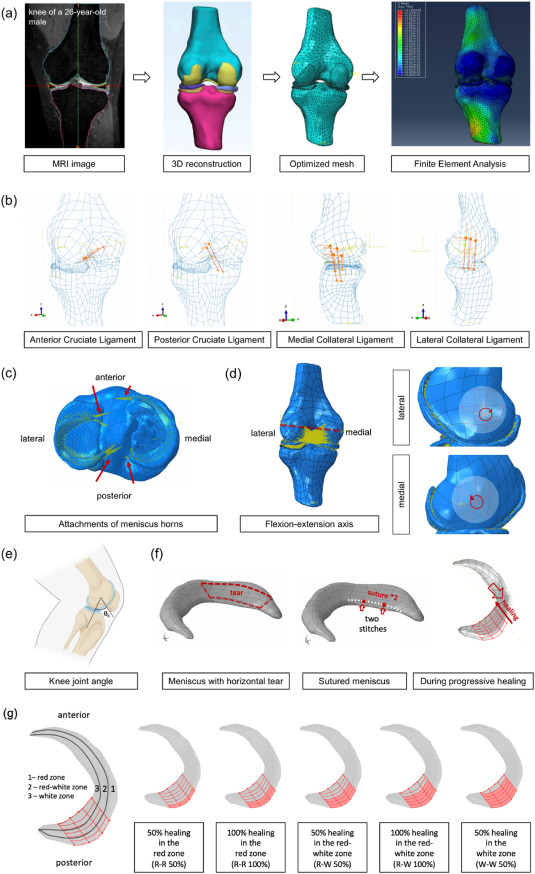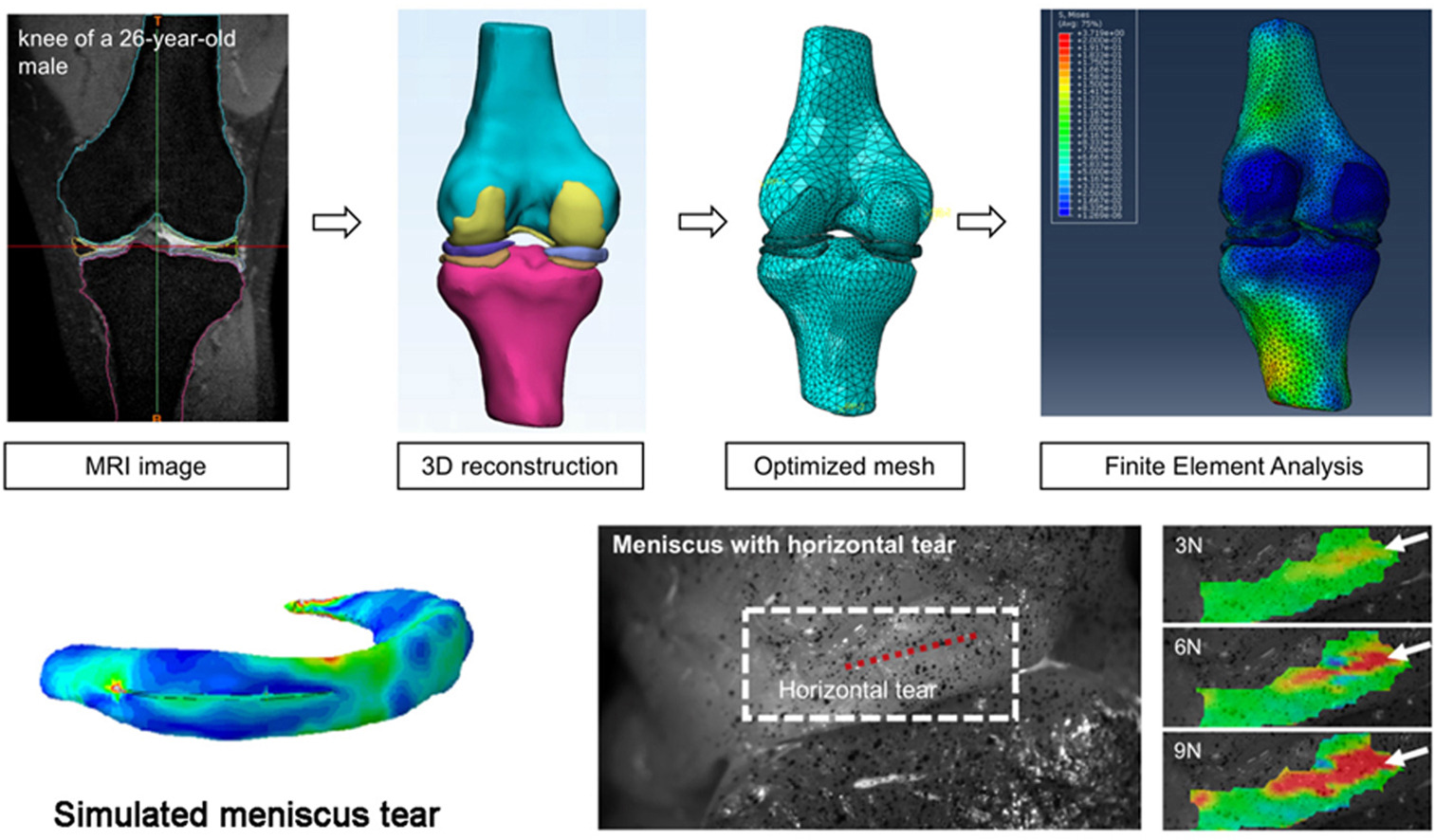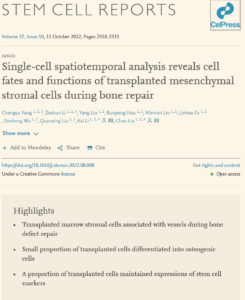This paper investigates the biomechanics of horizontal meniscus tears and their healing during knee flexion using finite element analysis (FEA). We created a 3D knee joint model from MRI data and simulated complete, horizontally torn, sutured, and progressively healed menisci, validating the FEA model with ex vivo rabbit knee experiments.
Key findings indicate that horizontal tears cause significant stress concentration, particularly at tear endpoints, increasing the risk of propagation. While suture repair reduces stress in the torn region, it creates new concentrations at the suture sites, but generally reduces the overall risk of tear propagation. As healing progresses, the meniscus’s mechanical function gradually recovers. This study provides a theoretical basis for guiding clinical treatment and rehabilitation strategies for meniscal tears.




